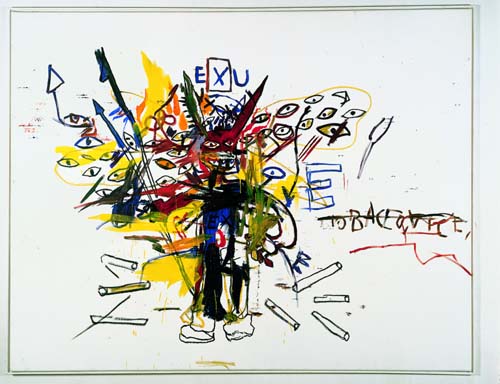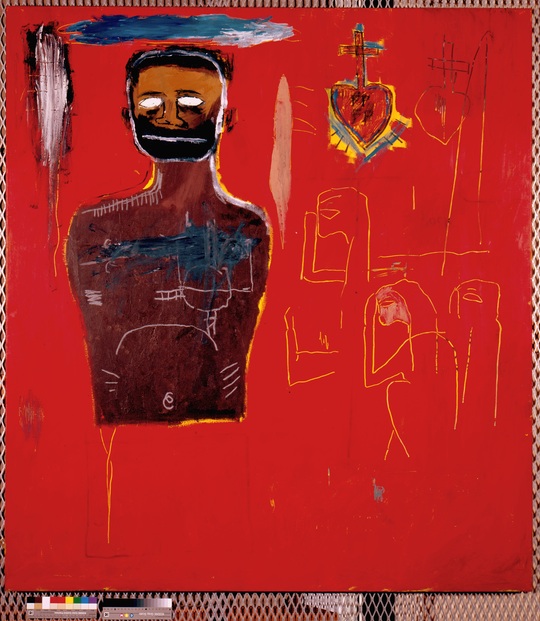
In Ogden Museum New Orleans as part of Prospect 3, from October 25th on till January.
About:
“Basquiat and the Bayou,” an exhibition focusing on “the important psychological and aesthetic presence that the South and the Bayou had in Basquiat’s work” (and mentioned several months ago in a post here) will open this Saturday, October 25th, as part of Prospect.3, the biennial art fair in New Orleans.

Curated by Franklin Sirmans, Basquiat scholar and the Artistic Director for Prospect.3: Notes for Now, the exhibition is billed as “an in-depth survey examination of Jean-Michel Basquiat’s relationship to the South.” Although Basquiat was a quintessential New York artist, and his work is often interpreted as incorporating New York street life, he was constantly referring to episodes from African American history, and broader history. These included common themes of both imperialism and oppression of Blacks, and the great triumphs of Black people, in sports, music, spirituality, and elsewhere. Much of this was set in the South, as in his monumental Undiscovered Genius of the Mississippi Delta (recently sold in auction, and unfortunately not included in this exhibit) and the many related works, or his great Jim Crow painting, and several others.
This exhibition includes such works as Zydeco (named after the Louisiana musical style); the 1982 CPRKR memorializing Charlie Parker; the great 1985 collage painting Natchez; the anatomical print Back of the Neck; Exu from 1988, the year he died; and King Zulu, a large Basquiat painting featuring Jazz musicians, and referring to Louis Armstrong’s being chosen as the traditional “King Zulu” for the New Orleans Mardi Gras Parade. Basquiat also took an meaningful trip to New Orleans, where he was eager to find links between African traditions and the Black American experience. The organizers state that the selection of works there “constitutes a meditation on the powerful symbolic presence of the Mississippi River and its delta in the work of this iconic artist, as a physical and cultural conduit for Africans in the New World.”


